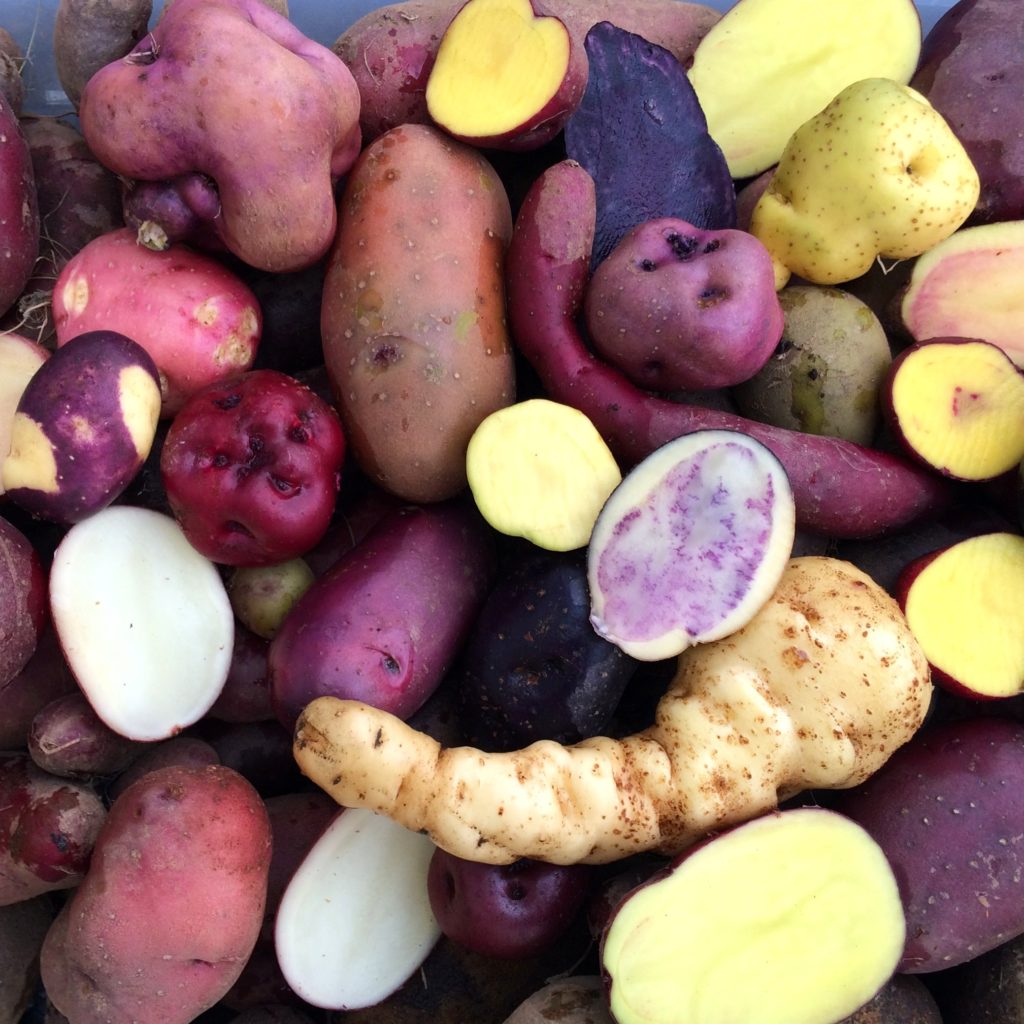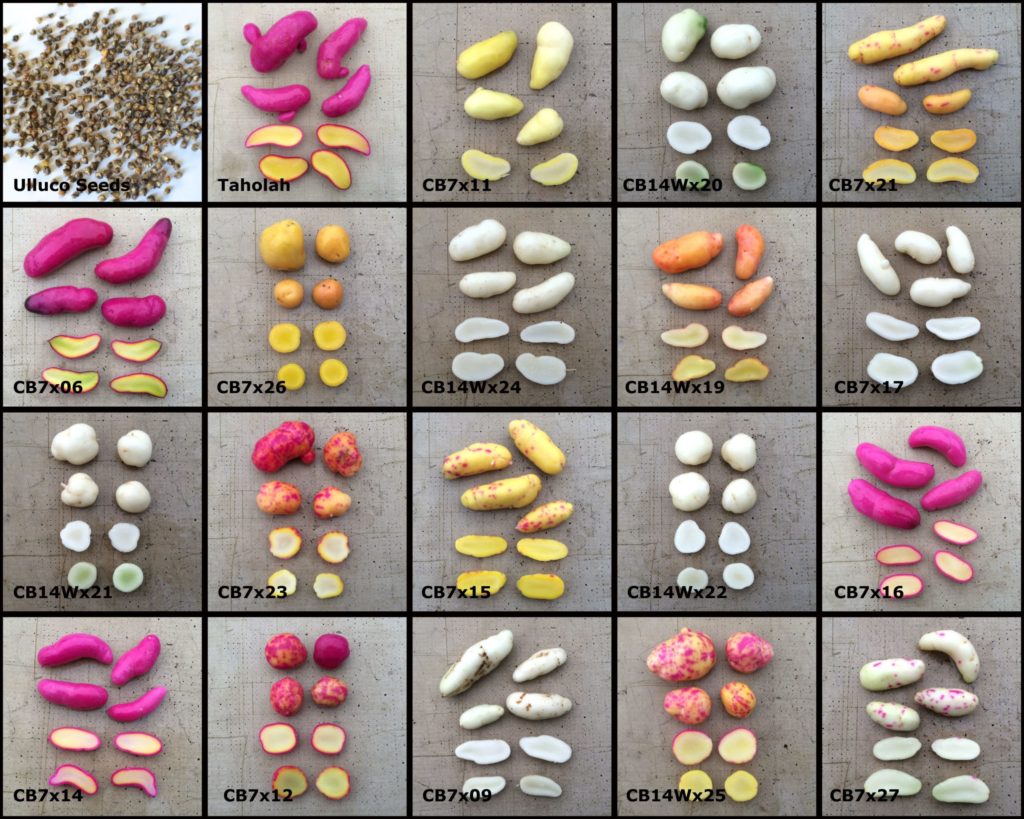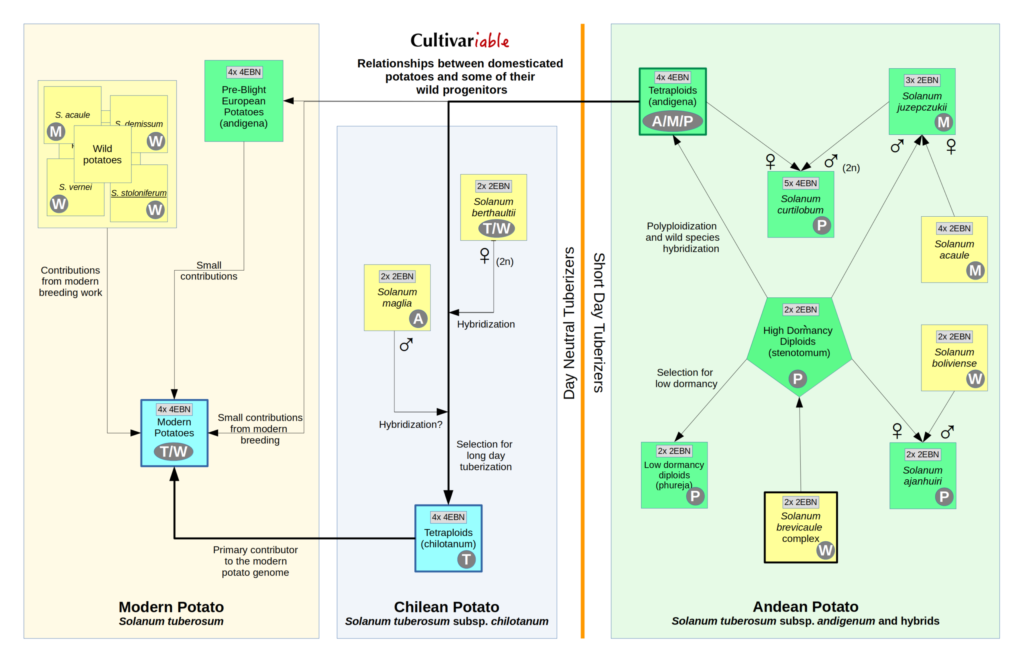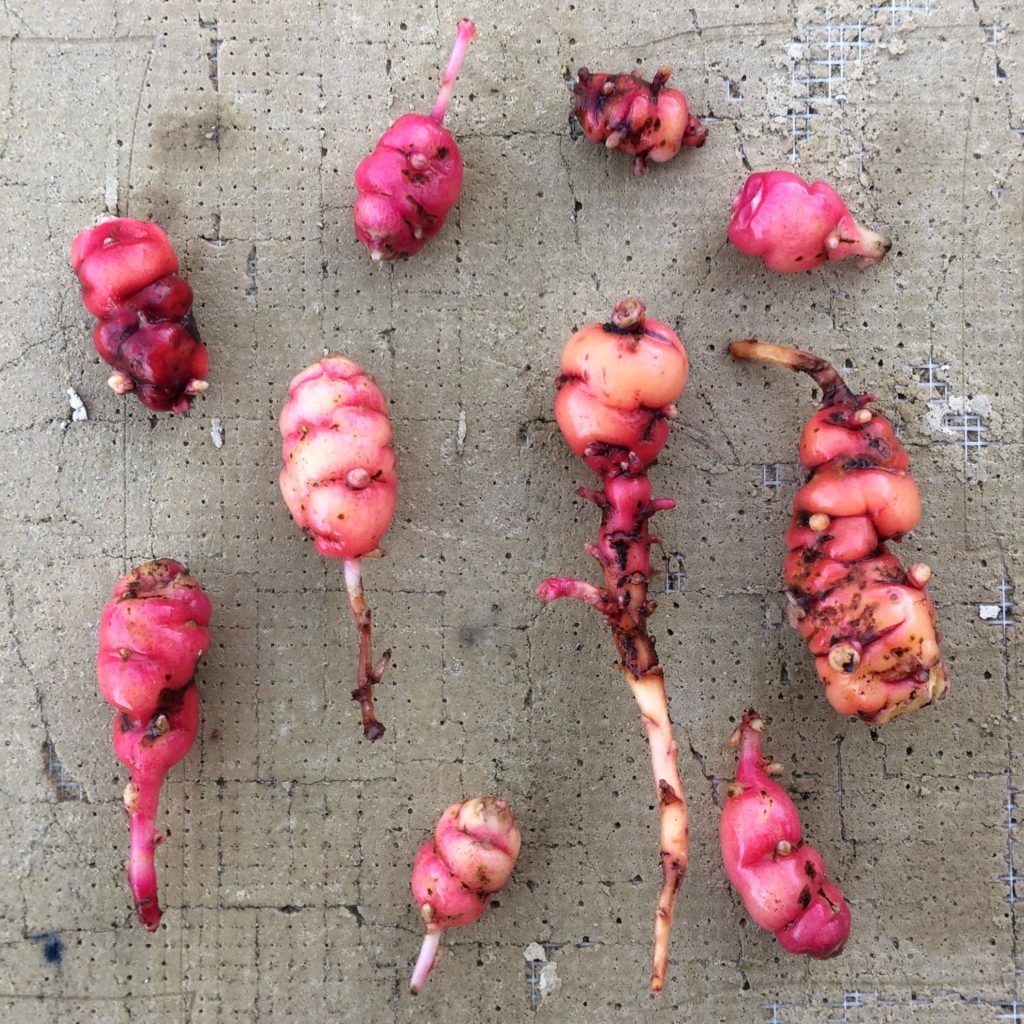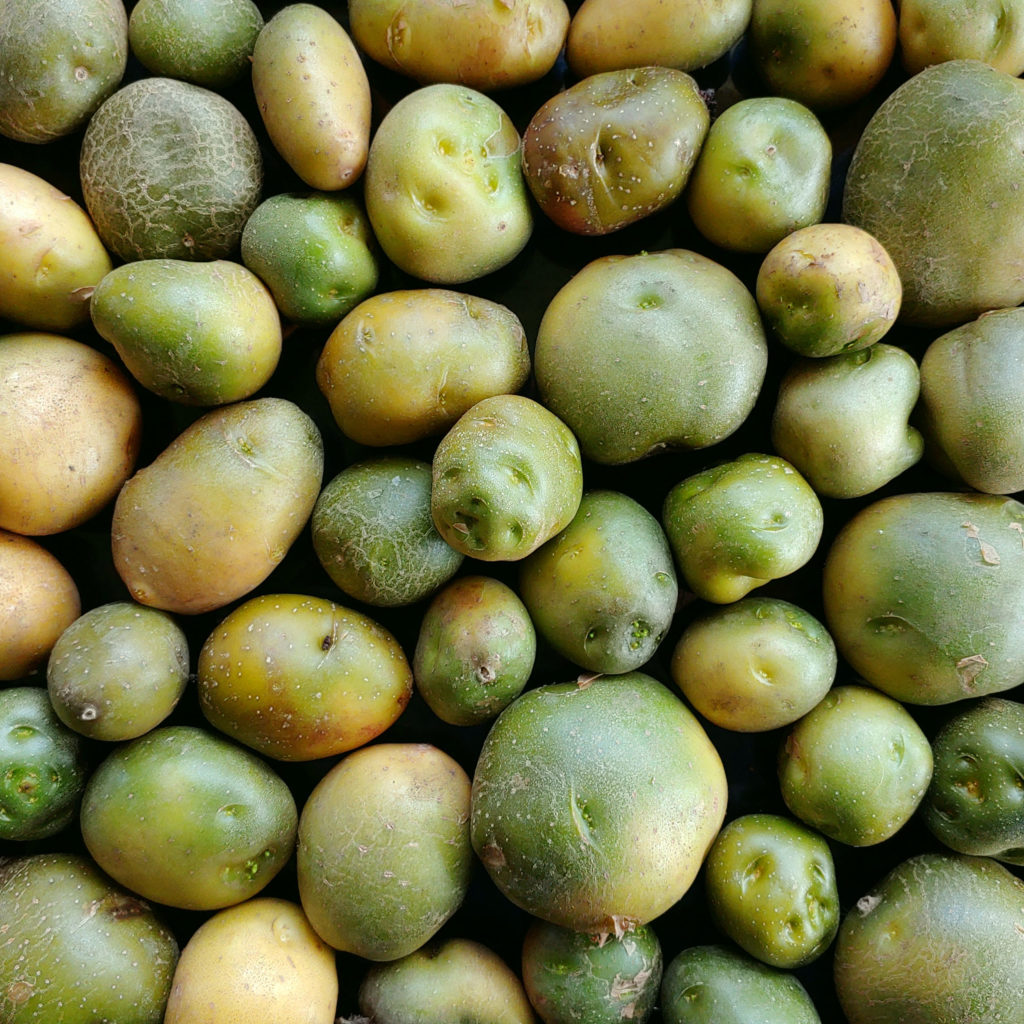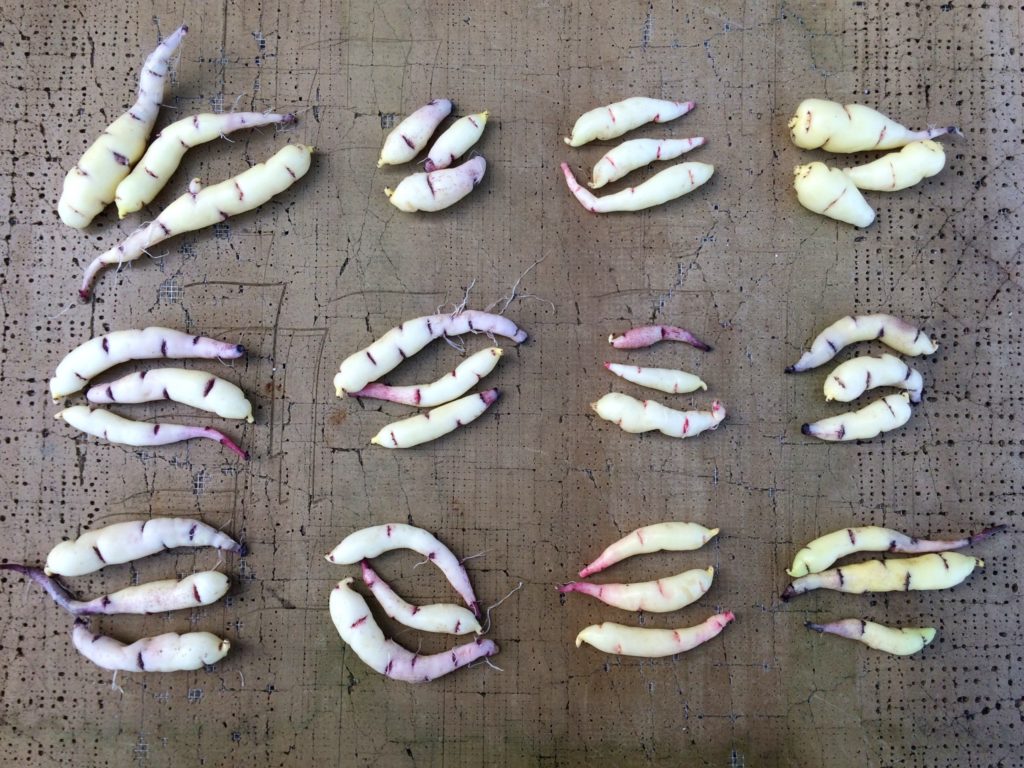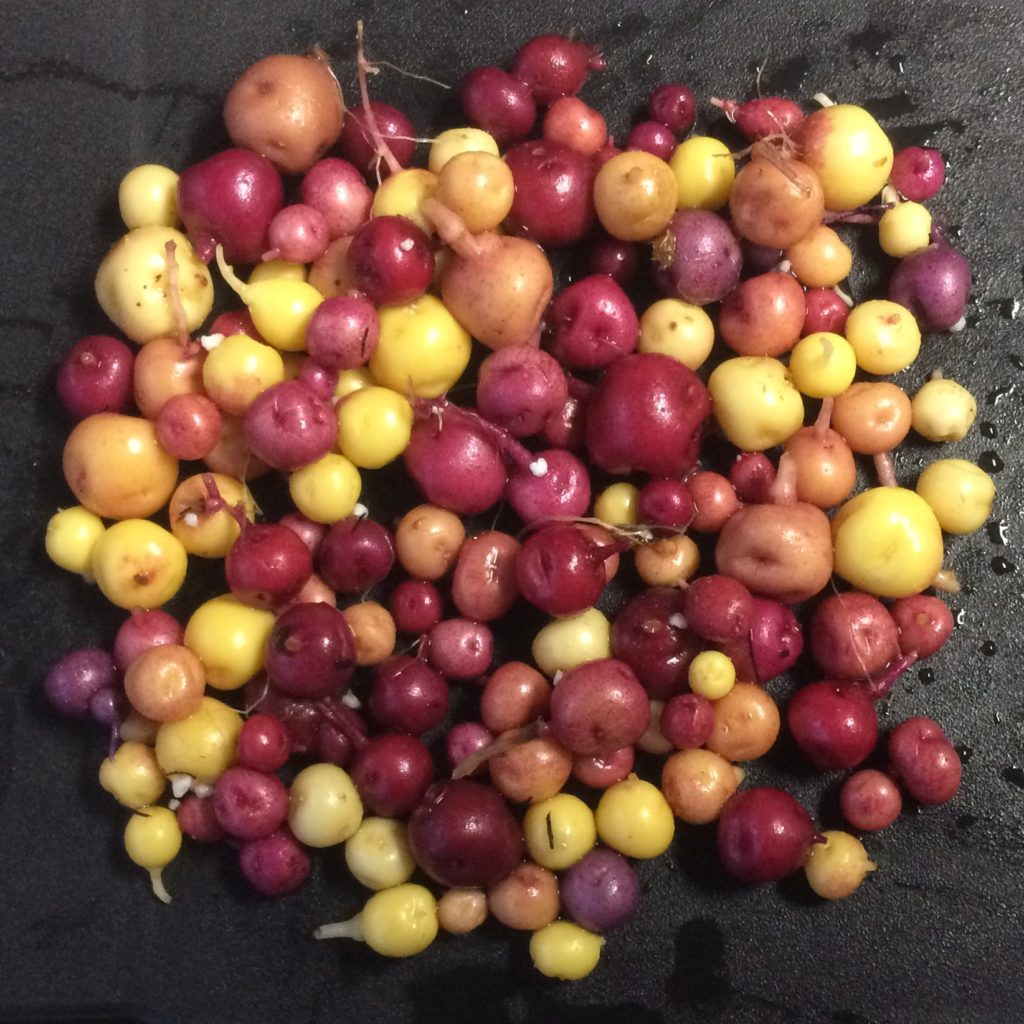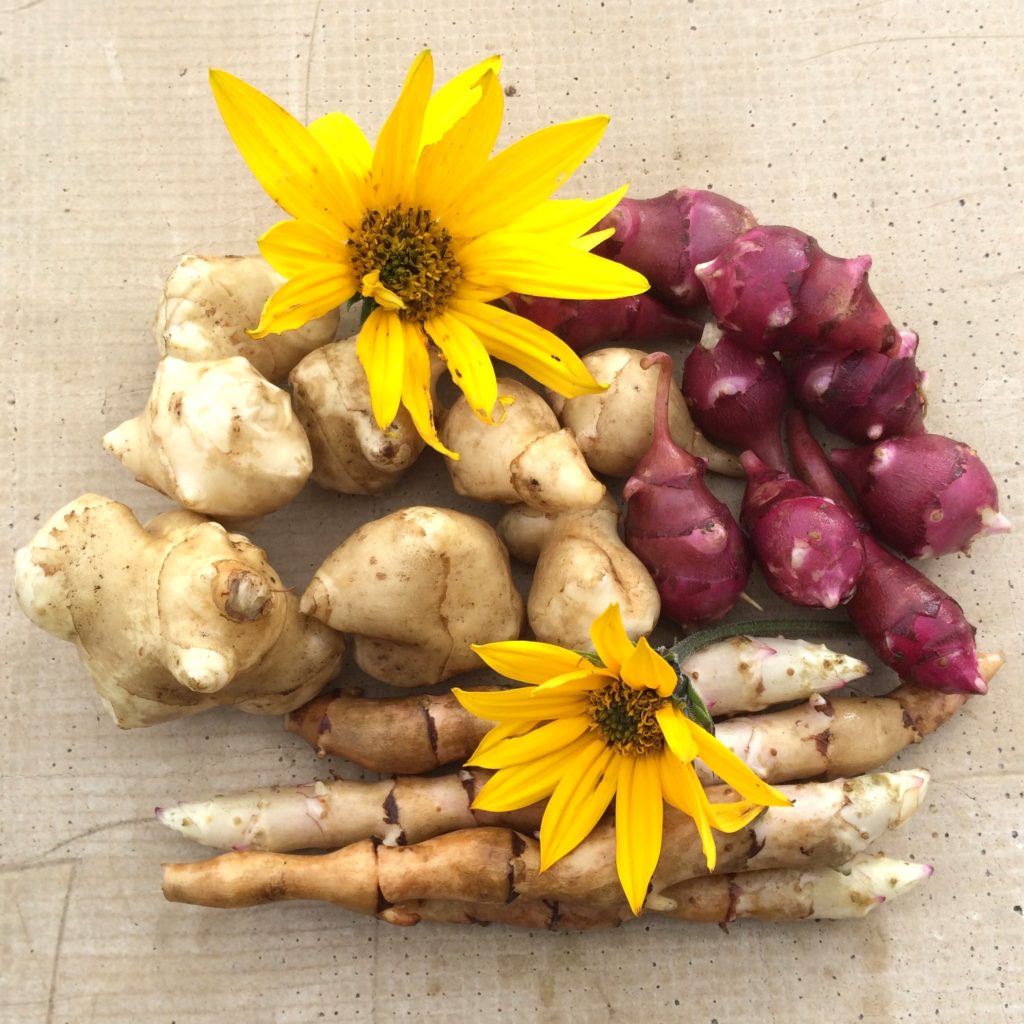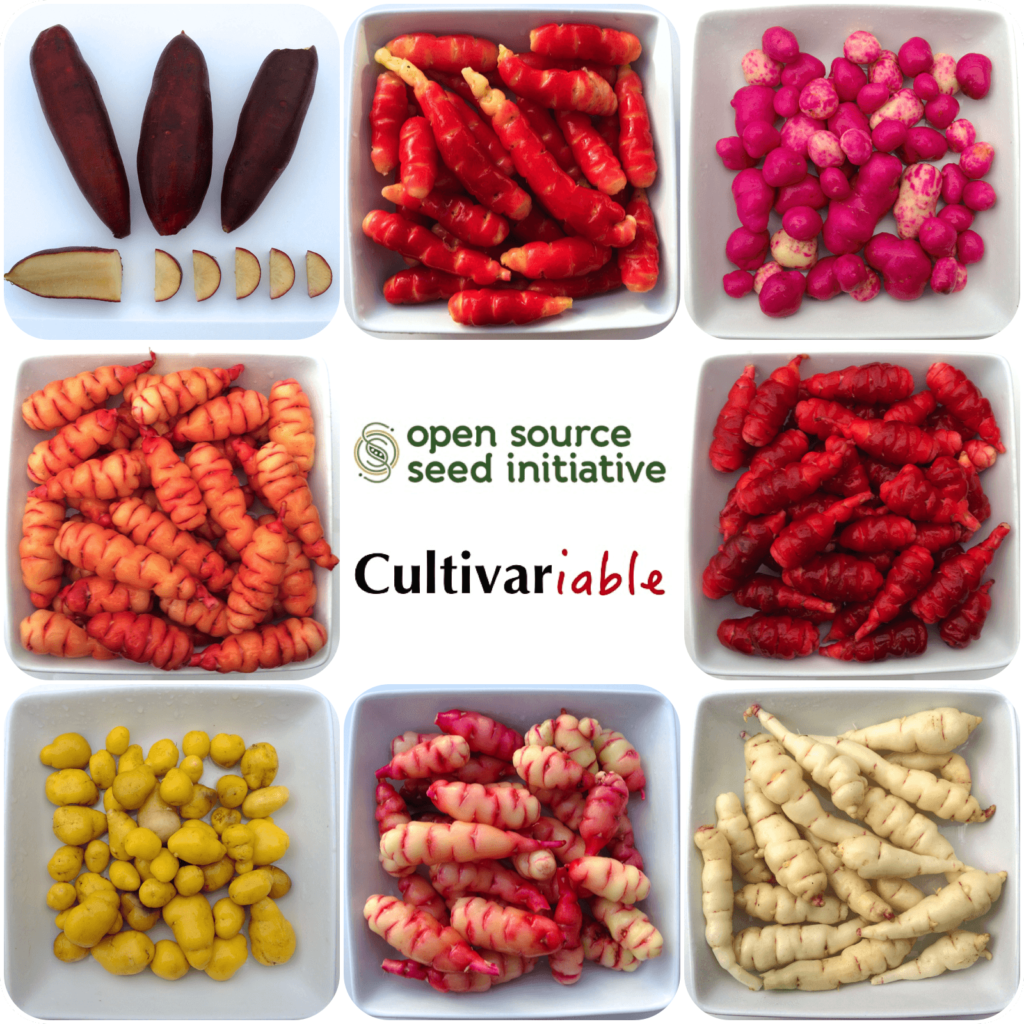Last year, I put together a summary of potato color genetics and ever since I have been getting emails asking questions. A lot of those questions center on how to use the information. I’m happy to try to answer those questions to the best of my ability, because I think potato genetics are fun. This […]
Category Archives: Blog
Cultivariable is officially five years old! (In truth, we’re really closer to seven, but I can’t pinpoint exactly when the transition from hobby to business occurred and we got our first business license at the end of 2012. Five is about right for when I really got serious.) They say time flies when you’re having […]
A quick review for those who have not been following our ulluco work: Ulluco is a crop that very rarely sets seed. In fact, there are only two published reports of ulluco seed production: here and at the University of Turku in the early 1990s. There is perhaps one published report of seed being found […]
Being a fundamentally lazy person, I always prefer to search for work that has already been done by somebody else. That can be frustrating in the world of plant breeding, where information tends to come in two forms: highly technical or excessively simplified. There isn’t much middle ground. My search for a chart showing the […]
One of the best things about growing oca is that it is generally very resistant to disease. Unlike potatoes, which are vulnerable to more than a dozen common diseases and need constant attention, oca usually fends for itself very well. The most common problem here is a bacterial stem rot, but it usually occurs late […]
Overview All potatoes contain toxic compounds called glycoalkaloids, of which the most well-known is solanine. Potatoes accumulate glycoalkaloids primarily to deter pests. Glycoalkaloids are usually heavily concentrated in the foliage, but are also present in the tubers. A safety limit of 20 mg of total glycoalkaloids per 100 g of potato was established a century […]
The domesticated varieties of mashua (Tropaeolum tuberosum) are tetraploid, meaning that they have four copies of each chromosome. This allows the plant to carry twice the genetic diversity of a diploid organism (like most animals and many plants). Balanced against that, mashua is most likely an autoploid, meaning that it became tetraploid by doubling its […]
This post is not really meant to be read start to finish. The intent is that it will be picked up by search engines so that breeders and researchers working with these accessions in the future can find this information. We use accessions supplied by the USDA in some of our breeding work. This report […]
Some of the more frequent questions that people ask me center on obtaining seed from Jerusalem artichokes for breeding. Many crops that are propagated from tubers have a reduced capability for sexual reproduction. You will see this theme come up again and again in this blog, but the details differ from one species to another. […]
I breed 16 species seriously, meaning that I am actually able to make progress and either already have or anticipate eventually releasing new varieties. I work with another 21 species either prospectively, meaning that I would like to breed them but haven’t managed to get them to reproduce sexually, or on too small a scale […]

